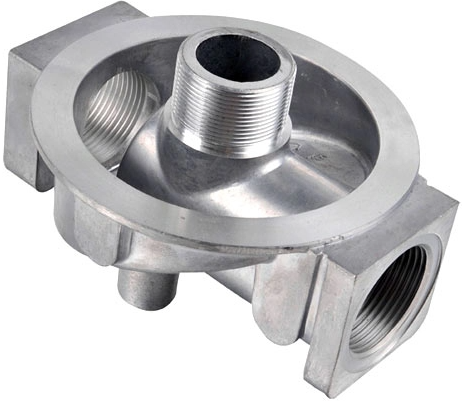How To Solve The Surface Defects Of Aluminum Die Castings | Diecasting-mould
In the production of aluminum alloy die castings, there are some small particles adsorbed on the casting surface in varying degrees. This kind of defect has only a slight hand feeling, which is difficult to find without careful observation or hand touch. However, it seriously affects the surface beauty of oxidation, electrophoretic painting and spraying castings, reduces the production efficiency and yield, and is also a fatal defect of high-grade decorative profiles. Therefore, analyzing its formation mechanism, constantly observing and analyzing in extrusion production practice, summarizing its causes and taking measures in time are effective means to reduce or eliminate this defect. In this paper, we discuss how to deal with the surface defects of aluminum alloy die castings.

How To Deal With The Surface Defects Of Aluminum Alloy Die Castings
In order to further improve the company’s product quality and create the image of high-end brand, the scientific and technological personnel of the company’s technology department and the front-line technical workers have conducted in-depth research on this defect, and achieved remarkable results in reducing the adsorption of granular burrs.
Cause Analysis Of Particle Adsorption
1. There are four kinds of granular burrs on the surface of zinc alloy die castings:
1) The air dust is adsorbed, and the dust, aluminum chips, oil and water generated by the coal-fired aluminum rod heating furnace are condensed into particles and attached to the hot profile surface.
2) Impurities in zinc ingot, such as metal inclusions and non-metallic inclusions left by insufficient refining.
3) Dust adhesion in aging furnace.
2. Cause
1) Influence of zinc ingot quality
Due to high-temperature casting, the casting speed is fast and the cooling intensity is high, resulting in needle like structure in the alloy, high hardness, poor plasticity and low tensile strength. During high-temperature extrusion, it will not only induce extrusion cracks, but also produce granular burrs, which are difficult to clean and feel strong. Tadpole like tails are often accompanied near the particles, which are grayish brown when observed under the metallographic microscope, The ingredients are rich in iron.
Influence of impurities in zinc ingot. In the process of melting and casting, the refining of zinc ingot is insufficient, and soil, refining agent, covering agent, powder coating and oxide film inclusions are mixed into the rod. These substances significantly reduce the plasticity and tensile strength of metal during extrusion, and are very easy to produce granular burrs.
The common structural defects of zinc ingot include looseness, coarse grain, segregation, bright grain, etc. all these defects of zinc alloy die castings have one thing in common, that is, they are not well welded with the casting matrix, resulting in the discontinuity of matrix flow. In the extrusion process, the slag inclusion is easy to be separated from the matrix. When passing through the working belt of the die casting mold, it adheres to the inlet end to form aluminum adhesion, And constantly pulled out by the flowing metal, which is very easy to produce granular burrs.
2) Influence of die casting mold
In extrusion production, the die-casting mold works under high temperature and high pressure. Under the influence of pressure and temperature, the die-casting mold produces elastic deformation. The working belt of the die-casting mold is parallel to the extrusion direction from the beginning. After being pressed, the working belt deforms into a horn shape. Only the edge of the working belt contacts the impurities formed by the casting, which is similar to the chip tumor of the turning tool. During the formation of impurities, particles are constantly brought out by the profile and adhered to the casting surface, resulting in “adsorbed particles”. With the increasing of impurities, the die-casting mold will rebound instantaneously, which will form bite mark defects. If there are many impurities accumulated and cannot be pulled out by the casting, and the impurities do not fall off when the die-casting mold rebounds instantaneously, problems such as rough surface of the casting, bright strip, tearing of profile, mold blocking and so on will be formed.
The die casting mold we use now is basically a plane mold. When the casting rod is not peeled, the impurities on the surface and inside of the casting rod accumulate in the dead zone of metal flow in the die casting mold. With the advancement of the extrusion casting rod and the increase of the number of extrusion rods, the impurities in the dead zone are also changing. Some of them are brought out by the normally flowing metal and accumulated in the space after the deformation of the working belt.

